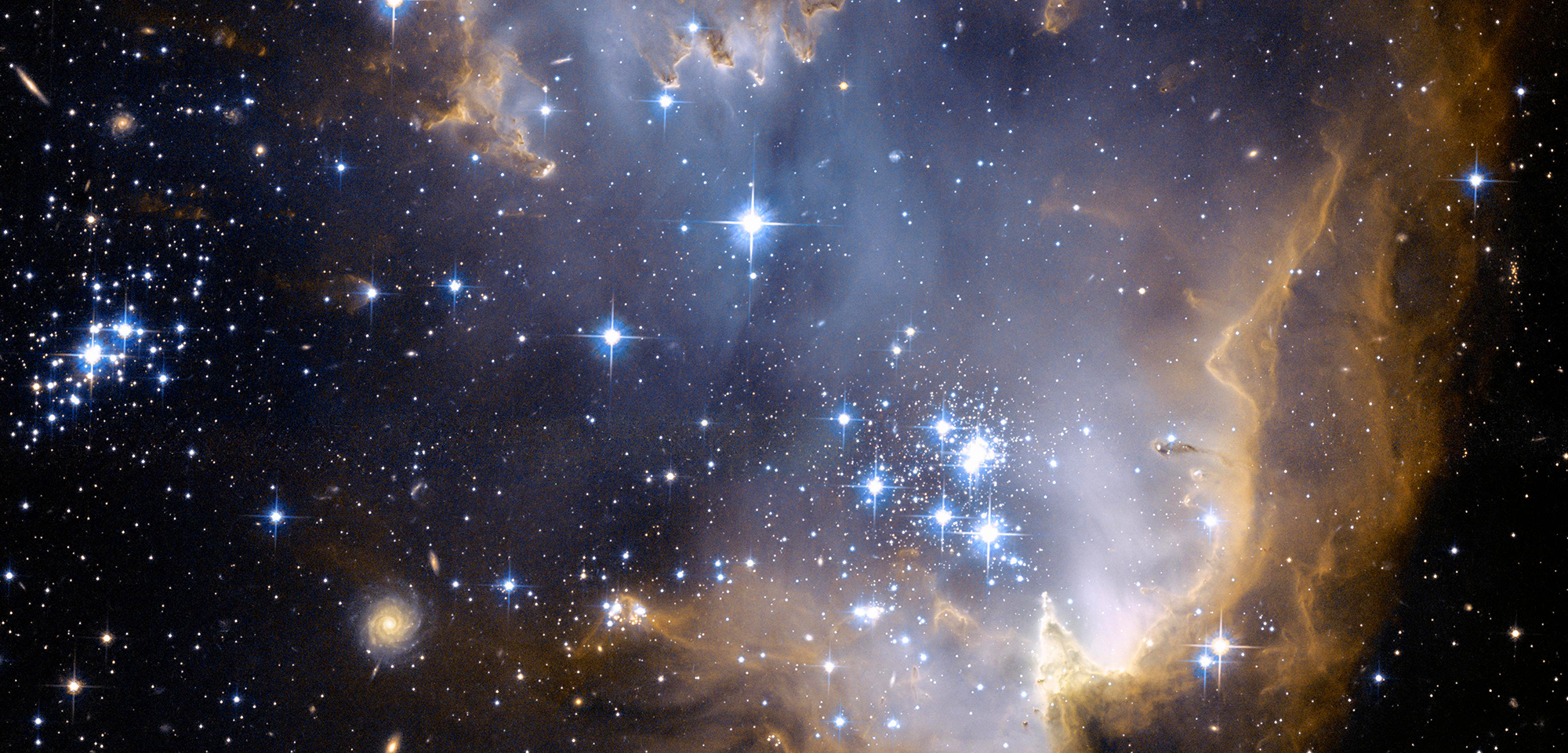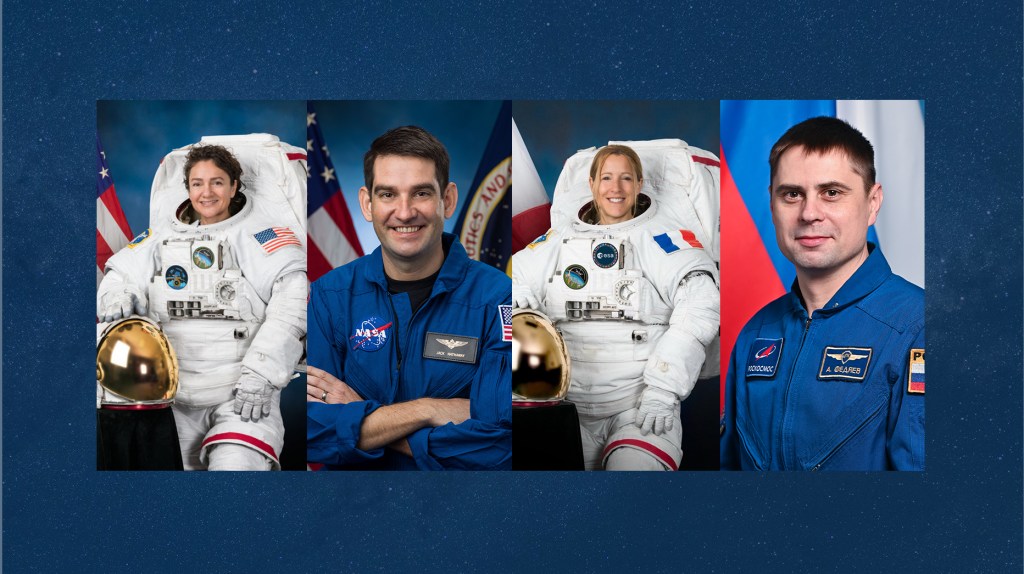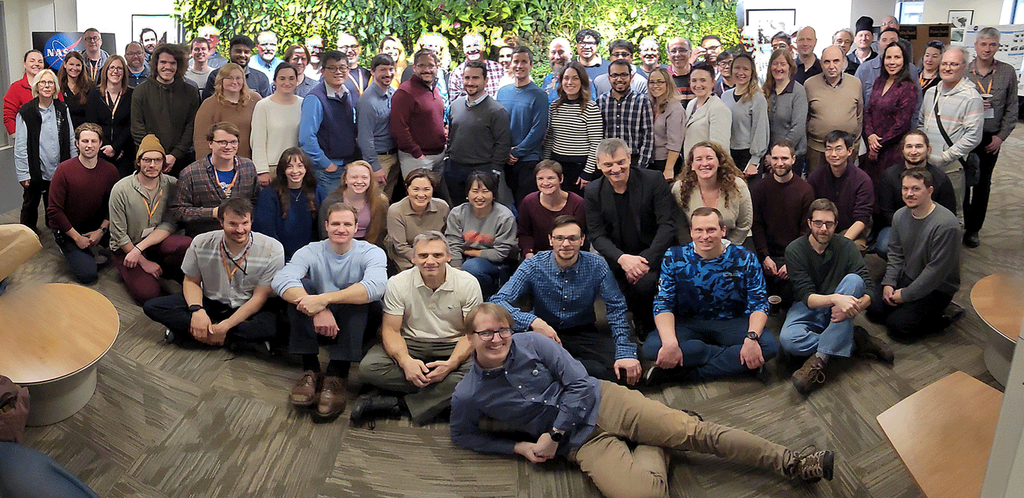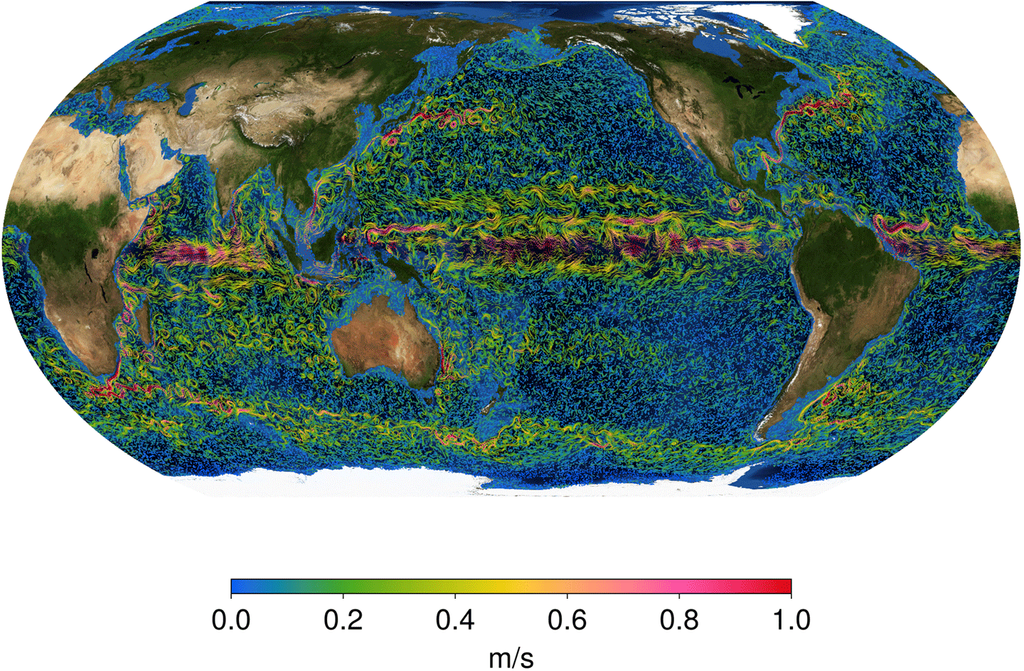1 min read
Star Cluster NGC 602

In a nearby galaxy called the Small Magellanic Cloud, young stars are spewing radiation that's eating away at the cloud of gas and dust that gave birth to them not too long ago. This Hubble image, taken with the Advanced Camera for Surveys, shows that scene.
The cluster of blue stars, called NGC 602, formed when a large part of the gas cloud collapsed under gravity and became very dense. The fierce radiation now being produced by these hot, young stars is sculpting the inner rim of the gaseous nebula. Parts of the nebula resist this erosion better than others, leaving tall pillars that point toward the source of the radiation — the stars.
Because the Small Magellanic Cloud is relatively close to us — less than 200,000 light-years away — it gives astronomers a good opportunity to study star formation in a galaxy other than our own, where the conditions are different. It's also a dwarf galaxy, which has fewer stars and lacks the enriched gas that larger galaxies like ours have. So it could provide a glimpse at what star formation might have been like in the early universe, before the first generations of stars created and distributed heavier elements into the cosmic environment.
Using Hubble observations of NGC 602, a team of astronomers led by Lynn Redding Carlson of the Johns Hopkins University determined that the massive stars at the center of the cluster and other, less massive stars formed there about 4 million years ago. When Carlson and her colleagues used NASA's Spitzer Space Telescope to study NGC 602, they uncovered even younger stars, some still cloaked in gas and dust, at the outskirts of the cluster. Some of these stars appeared to have started forming only about a million years ago. The results suggest that star formation began in the center of the cluster and then worked its way outward.
Follow-up studies using Hubble observations, led by Guido De Marchi of the European Space Agency, confirmed that the stars of NGC 602 were not born all at once but at different times, finding that some star formation might have started there as far back as 60 million years ago.
About the Object
- ConstellationConstellationOne of 88 recognized regions of the celestial sphere in which the object appears.Tucana
- DistanceDistanceThe physical distance from Earth to the astronomical object. Distances within our solar system are usually measured in Astronomical Units (AU). Distances between stars are usually measured in light-years. Interstellar distances can also be measured in parsecs.196,000 light-years (61 kiloparsecs)
About the Data
- InstrumentInstrumentThe science instrument used to produce the data.Advanced Camera for Surveys/WFC
- FiltersFiltersThe camera filters that were used in the science observations.F555W (V), F658N (H-alpha+[N II]), F814W (I)
- Object NameObject NameA name or catalog number that astronomers use to identify an astronomical object.NGC 602, N90
- Object DescriptionObject DescriptionThe type of astronomical object.Star Cluster
- Release DateJanuary 8, 2007
- Credit
Share
Details
Claire Andreoli
NASA’s Goddard Space Flight Center
Greenbelt, Maryland
claire.andreoli@nasa.gov



































